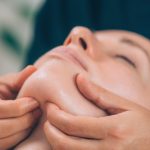Author: Mariel Kennedy, Licensed Esthetician at Ildi Pekar Skin Care
A European-style facial focuses on maintaining or improving skin health, hydration, and hygiene. While customized to a client’s individual needs, the facial follows a set path: cleanse, exfoliate, steam and massage, manual extractions, and treatment mask. It may seem a no-frills facial to an American audience, but in many countries, a facial is not viewed as a luxury treatment. Rather, monthly cleansing facials are part of a developed hygiene routine. This routine also normalizes other spa amenities, such as thermal baths or saunas that care for the skin of the entire body.
The stereotype of simplicity in European skincare appears well-founded. Concentrating on skin health to improve appearance, Europeans tend to start taking care of their skin early and to focus on products that maintain their skin barrier, such as gentle cleansers, hydrating moisturizers, and protective SPF. As they age, Europeans gradually add additional products, but the focus remains on healthy complexions. A health-forward facial actively prevents common skin problems. Starting young and basing treatment schedules around the monthly lifecycle of skin cells, regular spa goers may notice their skin is consistently more balanced; their treatments maintain a focus on preventing issues over fixing existing damage.
The skin barrier, made of equal parts water and oil, is the body’s defense against outside pathogens penetrating into the deeper, living layers of the skin. It also prevents water from evaporating out. Water is a main component of the cellular matrix that delivers nutrients into and removes waste from cells. By up-keeping the optimal environment, your skin cells will optimally function, metabolize, and reproduce to support skin that is elastic, well-rested, and clear. Instead of a focus on ridding the face of dead cells, the goal shifts to keeping cells active and alive as long as possible.
American culture has not always followed this normalization of self-care treatments. In fact, marketing skincare in America seems to follow two paths defined by an assumed age group: anti-acne or anti-aging. From puberty through our twenties, we’re shown products to dry out, draw out, or otherwise eradicate clogged pores and breakouts. Once our skin barrier is damaged from these stripping products, we’re shown anti-aging products that will supposedly replump, dewrinkle, and otherwise eradicate signs of aging. Unsurprisingly, for both of these markets, the promise—and expectation—is fast if not immediate results to fix existing problems. Thus, Americanized facials typically focus on the use of technology to deliver results that cannot be achieved by hand or product alone. With constantly evolving technology, this leads to many different types of innovative features and gadgets, such as microcurrent, lasering, and radio frequency to name a few. A facial may even come second to a trip to a dermatologist for minimally invasive procedures such as Hyaluronic Acid filler injections or Botox, professional peels, and prescription-strength products with strong actives like tretinoin.
The standard set by American beauty culture tends to focus on looking ever younger and concentrates predominantly on the face over the whole of the body. At-home routines seem more involved, with a basic routine consisting of cleanser, toner, exfoliator, concentrated serum, moisturizer or cream, and spf. The serums and creams can have many active ingredients, particularly acids and essential oils, that target specific areas of concern rather than maintaining overall health. With products having specified functions, more products are then needed to target multiple areas, so you may find yourself with several products to choose from daily or for day and night. Many modalities like LED masks and dermaneedles are available for home use.
These views of European and American spa and beauty cultures are, of course, very generalized. However, in both Europe and America there is a general or large-scale unifying factor: laws and regulations surrounding the manufacturing of cosmetics.
Under federal law, there is no requirement for FDA approval or testing before a cosmetic is allowed on the market. Protections are more about misbranding or false advertising once available. Claiming a commonsense approach for the short list of banned ingredients, the government leaves it up to manufacturers to ascertain the safety of ingredients and formulations. This stance is founded on an honor system, as manufacturers are not required to share any tests or the resulting information with the FDA. Did we mention that the FDA also has no power to force a recall of a product? Because that too is left up to the manufacturers. If you’re asking yourself how any of this is allowed or why none of these laws passed in the 1930s and 1960s have been updated, thank corporate America for making sure that lobbyists for manufacturers can exert pressure on and influence over lawmakers. In America, capitalism and corporate interests regularly take precedent over safety.
While the US banned less than a dozen chemicals, the EU has banned over 1,000. The EU also requires manufacturers to provide safety testing assessments and follow government authorization and regulation of their products before being allowed on the market. These laws directly mention “ensuring a high level of protection of human health” and argue “a risk-benefit reasoning should not justify a risk to human health.” A few ways of doing so include holding a specific person/manufacturer as responsible for the cosmetic and requiring transparency at each step of the production and distribution operations to determine a clear path through its supply chain. And while not all safe ingredients are free of irritants, they will still be listed clearly and appropriately labeled.
Ready to book an appointment? Check availability here. ![]()





